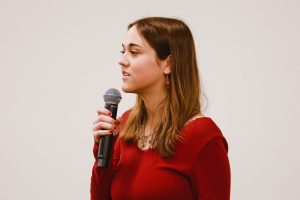Arts Events Showcase San Bernardino County Students
SAN BERNARDINO, CA—- Hundreds of students throughout San Bernardino County showcased their incredible talents at several visual and performing arts events.
San Bernardino County Superintendent of Schools (SBCSS) is proud to support arts education programs that cultivate and encourage students’ passions and talents.
“These students are some of our county’s most exceptional young musicians and artists,” said County Superintendent Ted Alejandre. “With the dedication and talents of our partners, educators and guest conductors, these incredible opportunities are possible.”
Hundreds of elementary, middle, and high school students performed at the University of Redlands Memorial Chapel during the Basin Honor Bands and Honor Orchestras events held in February.
Over two hundred students from K-12 schools in the high desert region took the stage at Barstow Community College’s Performing Arts Center for the High Desert Honor Bands event.
Since 1986, SBCSS has collaborated with the San Bernardino County Music Educators Association to host these concerts for students involved in music education programs throughout the county.
Performances extended into new territory for SBCSS with the introduction of the Poetry Out Loud competitions thanks to a partnership with Arts Connection, whose goal is to elevate arts and culture in San Bernardino County.
Several high school students from different regions in the county competed for a spot in the state championship. Faith Bakhos, a student from Big Bear High School, placed first in this year’s county finals. She then represented San Bernardino County in the California State Finals, where she competed against 49 poets from across the state and placed in the top ten.
Through collaboration with the Riverside, Inyo, Mono, and San Bernardino California Arts Project (RIMS CAP), which also supports Kern County, and the Arts Council for San Bernardino County, SBCSS created and supported The San Bernardino County Arts Education Network.
This initiative promotes quality arts education and events throughout the county, including The Young Artists’ Gallery.
The annual competition saw close to 400 works of art submitted by student artists, with nearly 150 entries selected for a month-long exhibition at California State University, San Bernardino (CSUSB).
The event provided students an opportunity to showcase their photography, ceramic sculptures, paintings and video productions for public viewing.
A culminating arts showcase sponsored by SBCSS will take place on April 4, from 6:30 – 8:00 p.m. at the California Theatre. The Performing Arts Showcase will feature student musicians, vocalists, thespians and dancers from across San Bernardino County. Admission to attend is free.
SBCSS is grateful not only for the arts partners, teachers, parents and volunteers who help support and encourage students’ exploration of arts education, but also the voters who supported Proposition 28, which will help to expand music and arts education for every student in San Bernardino County and the state of California.
For more news and information, visit the SBCSS Newsroom and follow us @SBCountySchools on Facebook, Twitter, Instagram and YouTube #transforminglives.
 Westside Story Newspaper – Online The News of The Empire – Sharing the Quest for Excellence
Westside Story Newspaper – Online The News of The Empire – Sharing the Quest for Excellence





